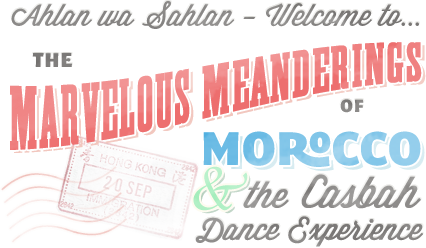The dancer who calls herself Morocco is one of a growing number of American exponents of Middle Eastern and North African dance. And when Morocco burst onstage at the Theater of the Riverside Church Sunday night – every golden thread of her fringed costume flying out with every moving muscle – she looked like an angora cat aflame.
Much of what Morocco and her company, the Casbah Dance Experience, practice has been called “Oriental dancing” and some would call it belly dancing. Certainy, the part of the body most seen in motion is the abdomen. But as Morocco and her male and female colleagues proved here, these dances have a rich variety within set forms.
Judging from the packed house, these nuances are easily appreciated by a host of afficionados. When any of the dancers would perform a feat of virtuosity – a subtle quiver of the posterior, a rhythmic sequence of stomach contractions, an execution of rapid steps, a balancing act with sword or cane – those in the know would let out the high-pitched, flame-like wail known as a “zaghareet”. This equivalent of an olé might also be accompanied by a spectator waving his worry beads above his head, for added approval.
Such audience participation is well within the norm, and the ability to elicit this response is a tribute to Morocco and her young dancers. For the dances that form her repertory were not originally theatrical dances but part of a way of life. Even the nightclubs in which so-called belly dancers perform are regarded as communal sites. For all their initial sensual impact, these dances have their own conventions and become anything but erotic.
In fact, most of them were performed in layers of clothes and robes. Work dances such as “Egyptian Washerwomen.” chain dances such as the Turkish “Karsilama”, Moroccan dances such as the ritual “Guedra”, and a fragment of a whirling-dervish dance need not be considered any differently from any other ethnic dances.
Fatima´s beautiful “Ottoman Odalisque” and “Pharaonic”, a good-humored kitch item with women dressed as Pharoahs, were fantasy pieces. Sergio´s languorous male Oriental dance and Morocco´s final lengthy pelvis-shaking, fast-stepping arm-waving Oriental solo were the showstoppers.
